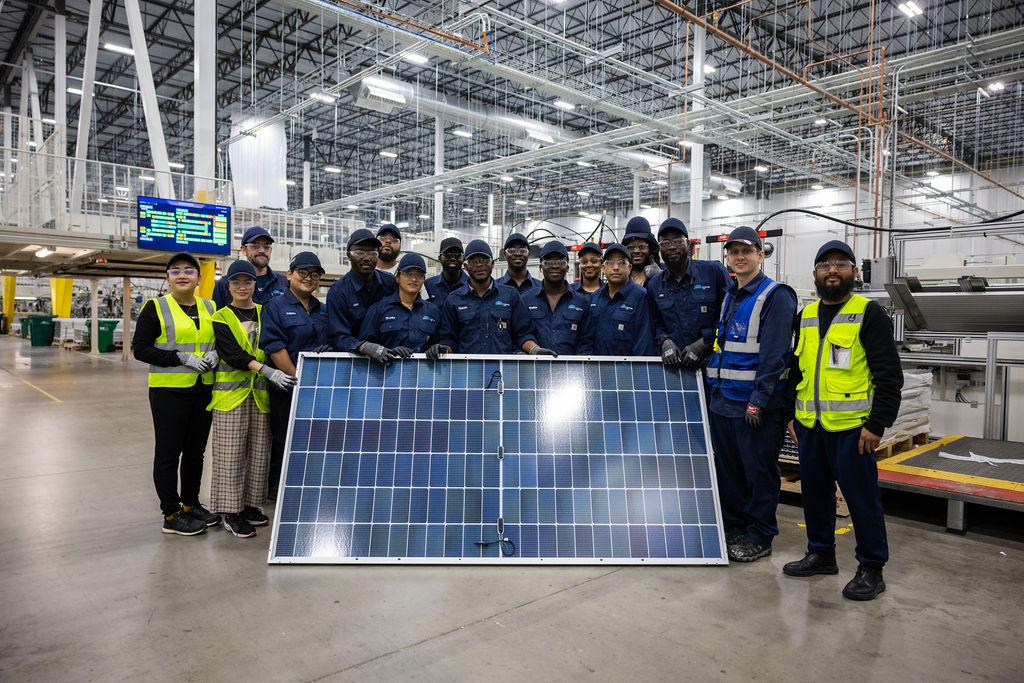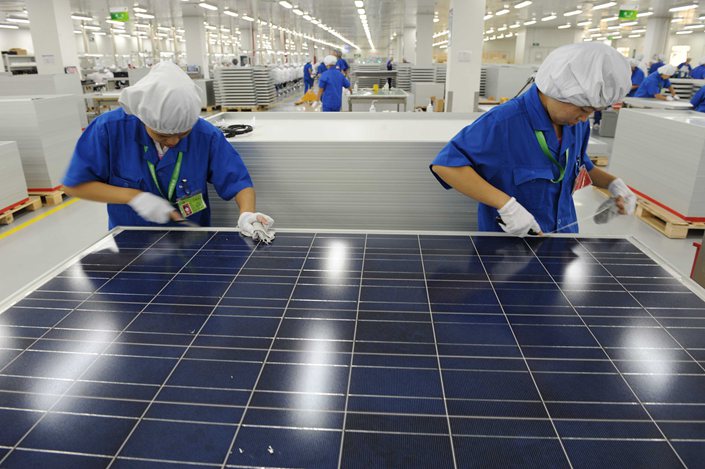Solar Power Equipment Virginia: Lumina Solar Concentrates On Providing Advanced Photovoltaic Solutions For Residences And Services
History and Establishing
Have you ever questioned how a photovoltaic panel business springs from a mere stimulate of motivation into a powerhouse of renewable resource? It typically begins with a vision-- one fueled by a blend of innovation, decision, and a pinch of serendipity. The journey of lots of solar companies mirrors the development of the technology itself: from large, ineffective panels to sleek, high-efficiency marvels harnessing the sun's bounty.
The Early Days
In the late 20th century, when solar energy was still a niche idea, leaders planted seeds for what would end up being a global motion. Picture a small workshop filled with curious engineers, tirelessly explore photovoltaic cells. Their passion was palpable, frequently driven by a desire to fight climate change and reduce reliance on fossil fuels.
One such anecdote has to do with a founder who, inspired by a camping journey, realized that even in remote locations, the sun might power important gadgets. This easy observation sparked a business's objective to democratize access to tidy energy.
Founding Principles

- Innovation: Continuously pressing the borders of solar technology to enhance effectiveness and toughness.
- Sustainability: Dedicating to eco-friendly manufacturing and minimizing carbon footprints.
- Accessibility: Making renewable resource solutions economical and practical for everyday users.
Turning points in Growth
| Year | Key Event |
|---|---|
| 1985 | Business founded in a little garage, concentrating on research study and development. |
| 1995 | Very first business photovoltaic panel item launched, gaining local attention. |
| 2005 | Broadened to worldwide markets, embracing global sustainable energy objectives. |
| 2015 | Introduced innovative photovoltaic panel innovation with boosted energy conversion. |
Isn't it fascinating how these incremental actions, typically overlooked, shape the energy landscape today? The photovoltaic panel company story is not almost technology; it's about a ruthless mission for a brighter, cleaner future.

Developments in Solar Panel Technologies
Ever seen how some photovoltaic panels gleam brighter and last longer? It's not magic; it's the science of photovoltaic performance. Modern photovoltaic panel companies invest heavily in innovations like bifacial cells, which record sunlight from both sides, improving energy harvest without expanding roof area. Have you ever wondered why some panels perform much better on cloudy days? That's due to here advances in thin-film solar technology, which prospers under diffused light conditions.
Item Variations Tailored to Special Requirements
One size never fits all. Photovoltaic panel providers now offer:
- Monocrystalline panels for optimum effectiveness and smooth aesthetic appeals, suitable for space-constrained rooftops.
- Polycrystalline panels, which use an economical alternative without sacrificing too much output.
- Building-integrated photovoltaics (BIPV), combining solar tech seamlessly into architectural elements like windows and facades.
Picking the best product isn't simply about in advance cost; it has to do with matching your environment, energy goals, and long-term cost savings. Homes shaded by trees need panels that stand out in low-light circumstances, something lots of overlook until energy bills climb all of a sudden.
Technical Tips for Optimal Selection
- Examine the temperature level coefficient-- lower worths indicate panels lose less effectiveness on hot days.
- Search for panels with boosted anti-reflective finishes to maximize light absorption.
- Think about the panel's service warranty not simply for problems, however for guaranteed power output over years.
- Do not ignore the value of the inverter innovation coupled with the panels; it can make or break your system's efficiency.
Beyond Panels: Emerging Patterns
Think of solar panels that adjust their angle immediately to chase after the sun-- tracking systems are ending up being more available, increasing yield significantly. Or solar tiles that mix undetectably into your roofline, transforming your home into a silent, self-dependent power generator. These innovations are reshaping what a photovoltaic panel company provides-- not just products, however integrated energy solutions.
Market Presence and Global Operations
Ever question why some solar panel business appear to sprout up in every corner of the world while others barely make a ripple? The difference lies not just in innovation however in mastering the art of navigating varied markets. Broadening globally resembles planting seeds in various climates-- you should comprehend each environment's distinct conditions to thrive.
Take, for example, the detailed dance of logistics and supply chain management. Shipping panels halfway across the world isn't simply about range; it's about timing, custom-mades, tariffs, and adjusting to regional need fluctuations. A company with robust global operations prepares for these variables, making sure panels arrive on schedule without pumping up costs. This foresight is no little accomplishment and frequently separates industry leaders from followers.
Key Methods for Expanding Market Existence
- Localized production: Establishing production centers near target markets lowers shipping delays and import complexities.
- Strategic collaborations: Working together with regional firms speeds up market penetration and builds trust.
- Adaptive item style: Customizing photovoltaic panel tech to weather, sun intensity, and infrastructure subtleties improves performance and approval.
What about the human factor? Photovoltaic panel business operating globally should fix up cultural distinctions and regulatory nuances without losing sight of their core mission. What works in a sun-drenched desert may falter in a humid coastal area. Sometimes, the most innovative service is just listening-- absorbing regional insights to fine-tune technology and method.
Specialists often encourage a phased rollout instead of a shotgun growth. Why risk overextension when determined development constructs sustainable momentum? Scaling wisely indicates balancing ambition with functional resilience - Best Solar Panel Company Virginia. In the race for sustainable energy supremacy, perseverance can be as important as speed.
Environmental Impact and Sustainability Practices
When photovoltaic panels first emerged, many presumed they carried no ecological luggage. Nevertheless, the truth is more nuanced. The production of solar batteries involves uncommon earth metals and energy-intensive procedures, which can leave a sizable carbon footprint before the panels even reach rooftops. Yet, the real environmental cost depends heavily on the sustainability practices utilized by the photovoltaic panel business throughout the lifecycle of their products.
How typically do we pause to consider what occurs to photovoltaic panels at the end of their beneficial life? Unlike batteries or electronics, photovoltaic panels can last 25-30 years, but disposal and recycling paths remain underdeveloped in lots of areas. A business devoted to minimizing environmental damage will have a robust prepare for recycling photovoltaic products, salvaging valuable silicon, glass, and metals to avoid landfill accumulation.
Key Sustainability Strategies
- Using low-impact production techniques that reduce water and energy usage.
- Executing closed-loop systems to recycle production waste back into new panels.
- Taking part in transparent supply chain audits to guarantee ethical sourcing of raw materials.
- Designing panels for easier disassembly to help future recycling efforts.
It deserves keeping in mind that some solar business have pioneered innovative techniques, such as incorporating biodegradable components or utilizing less poisonous chemicals throughout fabrication. This not just minimizes environmental pressure but also sets a precedent for the industry. The question remains: can the solar industry really pivot towards a circular economy model without compromising effectiveness or affordability?
Expert Tips for Evaluating Sustainability
- Inquire about the business's commitment to carbon-neutral manufacturing and whether they balance out emissions.
- Examine if they partner with licensed recycling facilities devoted to photovoltaic panel waste.
- Try to find openness reports detailing environmental effects and sustainability goals.
- Think about the longevity and service warranty of panels as an indirect procedure of resource effectiveness.
In the end, going with solar energy ought to mean more than just slashing electrical energy bills; it has to do with supporting a future where energy is gathered responsibly and waste is attentively handled. Solar panel business that embrace this approach not only brighten homes but also cast a brighter light on sustainable innovation.